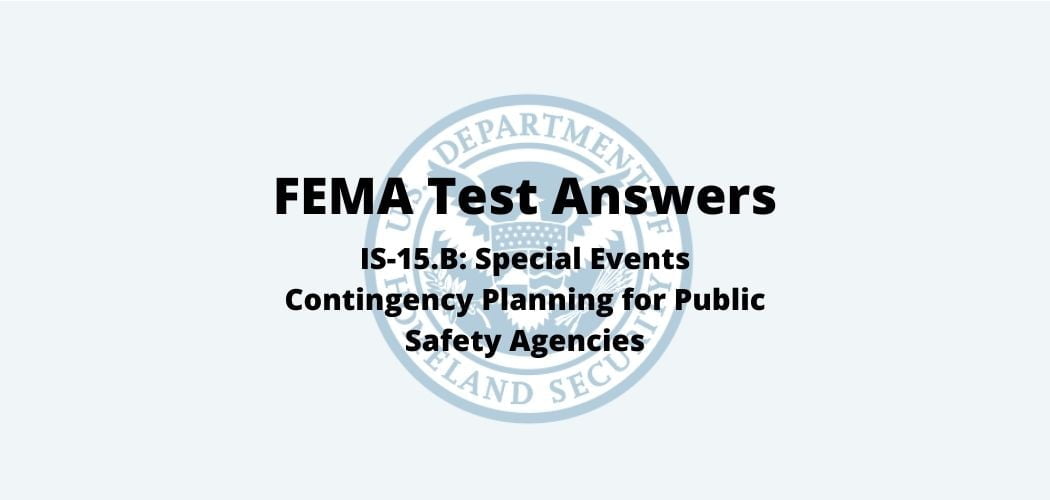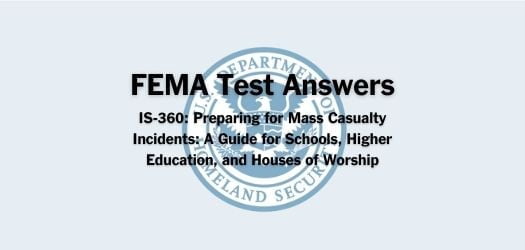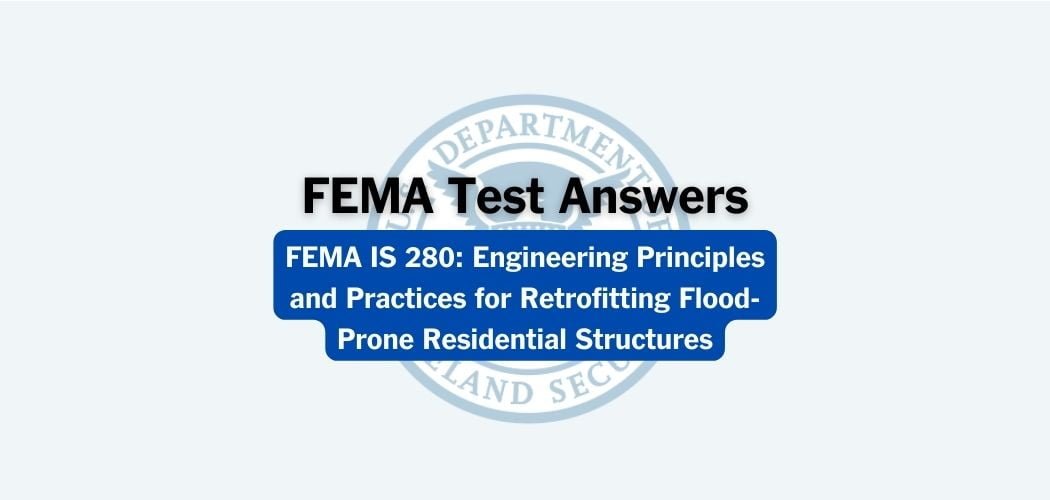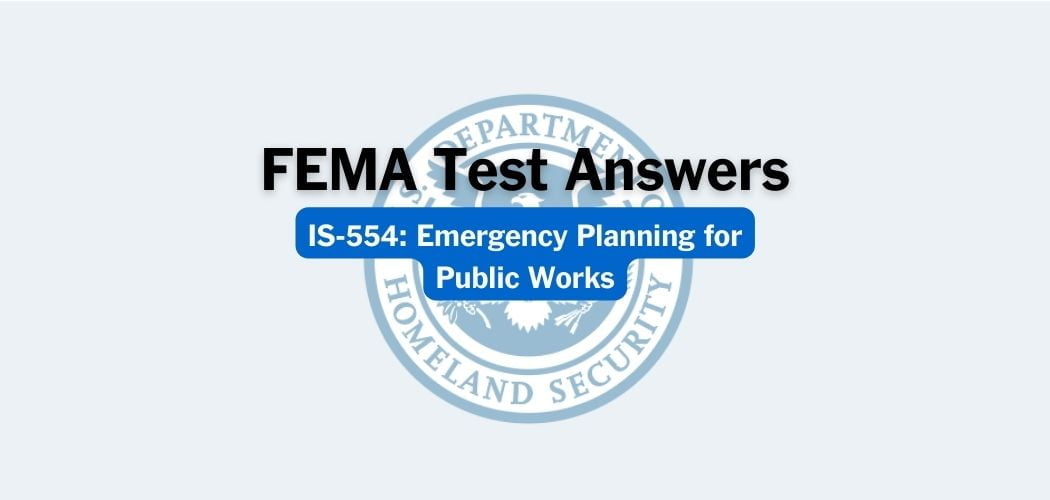Overview: The FEMA IS-951 course was published on 9/22/2016 to provide a mechanism for DHS employees in all related disciplines who utilize radio communications systems to understand the operation of portable/mobile radios, the basics of how radio systems work, and the principles and concepts of interoperable communications (especially within the National Incident Management System). Additionally, this training will provide instruction on how to locate and properly use the DHS Common Interoperability Channels.
Primary audience: FEMA IS-951 is for DHS Operational component employees who use radio as part of their normal duties and/or collateral duties. While there are no prerequisite courses required for the DHS Radio Interoperability Training, prior participation in/completion of a radio communications familiarity training course conducted during basic training, or by the employee’s specific DHS component, is strongly encouraged.
FEMA IS-951 test answers
Each time this test is loaded, you will receive a unique set of questions and answers. The test questions are scrambled to protect the integrity of the exam.
Question 1. The use of simplex channels is preferable for wide-area operations when needing to communicate over long distances.
A. TRUE✅
B. FALSE
Question 2. Encryption should be disabled prior to using DHS common interoperability channels during an event.
A. TRUE
B. FALSE✅
Question 3. If attempts to communicate on the channel designated for an event are unsuccessful, the next step should be to:
A. Report to the nearest command post location✅
B. Select another channel in a different radio zone
C. Download a new encryption key for the radio
D. Use the channel where you last had reliable communications
Question 4. The ability to establish and sustain communications in support of day-to-day mission operations, is the definition of:
A. Tactical communications
B. Interoperability✅
C. Support communications
D. Operability
Question 5. The primary purpose of the DHS common repeater and simplex channels is to establish interoperability among DHS components.
A. TRUE✅
B. FALSE
Question 6. Radios contain groups of channels which are located within:
A. Blocks
B. Sets
C. Zones
D. Modes✅
Question 7. To access an interoperability channel, it may be necessary for the user to:
A. Activate the radio’s scan feature
B. Change zones on their radio✅
C. Attach a keyloader to the radio
D. Press the home button
Question 8. DHS common interoperability channels are used by all federal agencies in addition to DHS components.
A. TRUE✅
B. FALSE
Question 9. If the word “Zone” does not appear as an available menu option on the radio’s display, it is not possible for the user to change zones.
A. TRUE✅
B. FALSE
Question 10. The ability to communicate among jurisdictions, disciplines, and levels of government, using a variety of frequency bands, as needed and as authorized, is the definition of:
A. Interoperability✅
B. Mutual aid communications
C. Operability
D. Command and control communications
Question 11. Which radio function is used to change between different groups of channels programmed into the radio?
A. Scan button
B. PTT switch
C. Accessory attachment
D. Zone selector✅
Question 12. To participate in an encrypted conversation, all radios must be:
A. Set to operate in a standard digital mode
B. Using the same encryption key✅
C. Operating on a repeater channel
D. From the same radio manufacturer
Question 13. Using encryption significantly decreases the radio coverage range.
A. TRUE
B. FALSE✅
Question 14. DHS radios in the Very High Frequency (VHF) band should contain which DHS common interoperability channels?
A. VCALL10 and VTAC11
B. DHS-RPT and DHS-SIM
C. FIO-1
D. DHSNET and DHSTAC✅
Question 15. Which type of radio normally has greater power and the ability to communicate over longer distances?
A. Digital portable radio
B. Mobile radio✅
C. Encrypted radio
D. Portable radio
Question 16. State and local agencies may also access Federal Interoperability Channels with the appropriate authorization.
A. TRUE✅
B. FALSE
Question 17. If operating on a trunked radio system and a short “talk permit tone” is heard when pressing the push-to-talk (PTT), or microphone button, a user must:
A. Switch to an analog channel
B. Pause briefly before speaking✅
C. Check to ensure the radio’s trunking feature is activated
D. Release the push-to-talk button and make another attempt to transmit
Question 18. When attempting to communicate on the Federal Incident Response (IR) channels during an event, the designated simplex calling channels (IR5 or IR15) should be used first.
A. TRUE✅
B. FALSE
Question 19. The primary function of a repeater is to:
A. Eliminate incompatibility between operators using radios from different manufacturers
B. Increase coverage range by receiving transmissions from users in the field and retransmitting them at greater power from a higher altitude✅
C. Link radio systems from different agencies together for interoperability
D. Allow the use of a common encryption key among different agencies
Question 20. When the symbol of a circle with a line through it appears on the radio display, it means:
A. Encryption is not turned on for the selected channel
B. The encryption key needs to be updated
C. The encryption key is not compatible with other users on the channel✅
D. Encryption is turned on for the selected channel
Question 21. The type of channel that normally offers increased coverage range and is best for communicating over greater distances is a:
A. Analog simplex channel
B. Digital simplex channel
C. Repeater channel✅
D. Encrypted channel
Question 22. If all attempts at radio communications during an event are unsuccessful, the next steps are to:
A. Remain in a vehicle and await assignment or instruction
B. Try any other means of communication and then report to a command post location✅
C. Report to a federal agency office facility to obtain direction
D. Turn the radio off and back on



